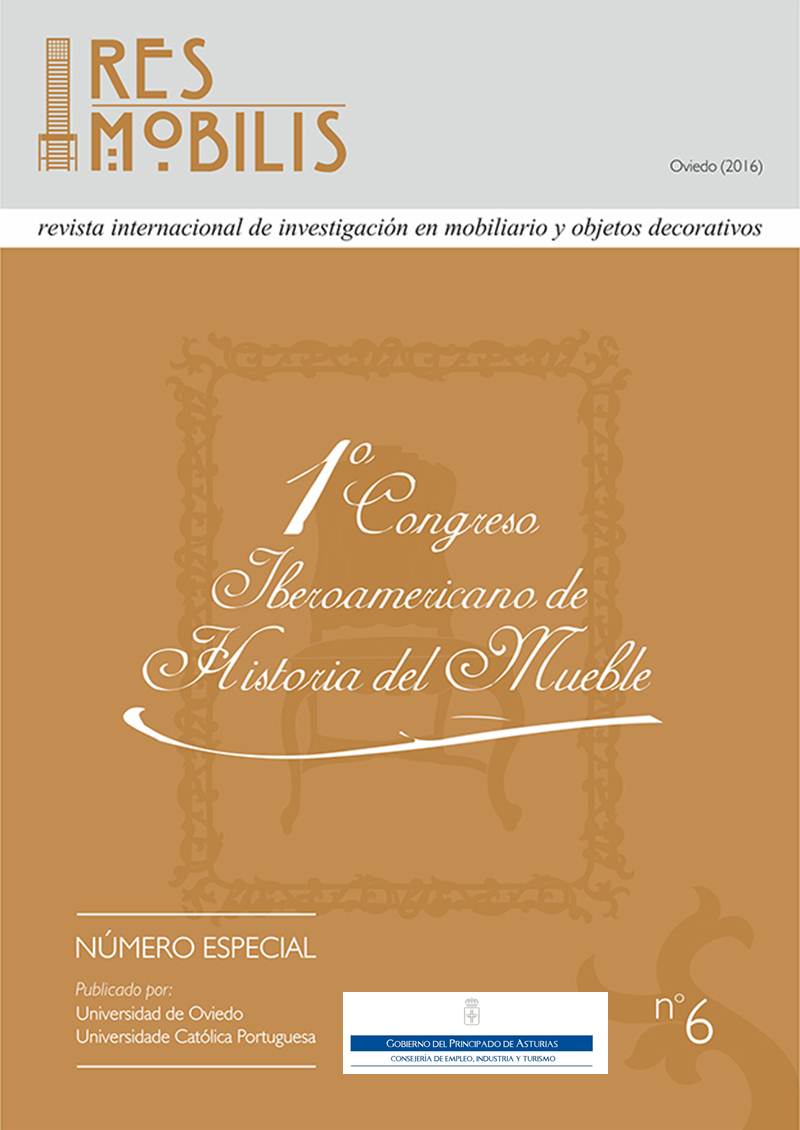Resumo
No âmbito da intervenção de conservação e restauro, foi feito o estudo material de um biombo, com recurso a métodos de exame e análise, que pretendeu esclarecer o seu estado de conservação, as alterações a que foi sujeito e a sua origem e data de execução. Constatou-se a existência de extensas e profundas modificações estéticas e iconográficas e o uso de técnicas e materiais que apontam para uma origem oriental, particularmente chinesa, em combinação com técnicas e materiais que não eram comuns no Oriente, mas sim no Ocidente. A mistura de azul da Prússia e auripigmento usada nas zonas de cor verde permitiu concluir que, se for oriental, é pouco provável que o biombo tenha sido pintado antes do século XIX.
Referências
ABREU, Pedro Cancela de, “Técnicas de construção de objectos namban”, in VINHAIS, Luísa; WELSH, Jorge (dir.), Depois dos Bárbaros II. Arte Namban para os Mercados Japonês, Português e Holandês, Lisboa, Jorge Welsh, 2008.
BAILEY, Kate, “A note on Prussian blue in nineteenth-century Canton”, Studies in Conservation, vol. 57, nº 2, London, 2012.
ERNST, Richard R., “In situ Raman microscopy applied to large Central Asian paintings”, Journal of Raman Spectroscopy, vol. 41, nº 3, 2010.
ESCOBAR, Nazaré Garcia (dir.), Biombo de Papel Sino-Japonês, Lisboa, Instituto Português de Conservação e Restauro, 2004.
FITZHUGH, Elisabeth West, “A database of pigments on Japanese ukiyo-e paintings in the Freer Gallery of Art”, in FITZHUGH, Elisabeth West; LEONA, Marco; WINTER, John (dir.), Pigments in Later Japanese Paintings, Washington, Freer Gallery of Art, 2003.
GETTENS, Rutherford J., KÜHN, Hermann; CHASE, W. T., “Lead white”, in ROY, Ashok (dir.), Artists' Pigments. A Handbook of Their History and Characteristics, vol. 2, Washington, National Gallery of Art, 1993.
INCARVILLE, Pierre d', Arts, Métiers et Cultures de la Chine, Paris, 1814.
RÉAU, Louis, Iconografia del Arte Cristiano, Barcelona, Ediciones del Serbal, 1997, tomo II, vol. III.
RONDOT, Natalis, “Une promenade dans Canton. La manufacture de laque d’Hip-qua et l’atelier de tabletterie de Ta-Yu-Tong”, Journal Asiatique, vol. 11, Paris, 1848.
SILVA FERREIRA, Rui, CURVELO, Alexandra, PAIS, Alexandre, ESCOBAR, Nazaré Garcia (dir.), Biombo Lacado, Lisboa, Instituto Português de Conservação e Restauro, 2004.
VAN DER REYDEN, Dianne, “Technology and treatment of a folding screen: comparison of oriental and western techniques”, in MILLS, John S., SMITH, Perry; YAMASAKI, Kazuo (dir.), The Conservation of Far Eastern Art, London, IIC, 1988.
WINTER, John, “The identification of indigo and Prussian blue on Japanese Edo-Period paintings”, in FITZHUGH, E. W., et al., Pigments in Later Japanese Paintings.
WINTER, John, East Asian Paintings. Materials, Structures and Deterioration Mechanisms, London, Archetype Publications, 2008.

